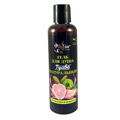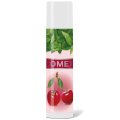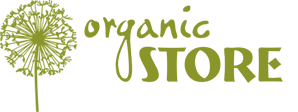 Many have heard about the dangers of synthetic preservatives in cosmetics, so there is no wonder that natural preservatives are becoming increasingly popular. What kinds of natural preservatives can be found in cosmetics products? What makes them better than their synthetic counterparts? Let’s try to figure these and other things out.
Many have heard about the dangers of synthetic preservatives in cosmetics, so there is no wonder that natural preservatives are becoming increasingly popular. What kinds of natural preservatives can be found in cosmetics products? What makes them better than their synthetic counterparts? Let’s try to figure these and other things out.
Any water-based cosmetic product is a perfect breeding ground for various bacteria and fungi, including pathogenic ones. Without preservatives, cosmetic products would spoil and lose all their useful properties really quickly; moreover, they would even become dangerous due to the toxins released by pathogenic microorganisms.
Preservative-free cosmetics, except for water-free products, have a very limited shelf life and need to be stored in the fridge. Naturally, it makes no sense to produce such cosmetics commercially, since they will probably get spoiled even before getting to the final consumer. This is why any commercially produced cosmetics contain some kind of preservatives, which, due to their high antimicrobial activity, prevent pathogenic flora from growing.
Of course, not all preservatives are created equal. Synthetic preservatives are considered the cheapest and most effective option, hence their widespread popularity. However, they have one huge drawback: some synthetic preservatives are considered allergens and can even have adverse effects on the health of your skin and hair.
For example, some artificial preservatives can cause skin irritation and allergic reactions, and some synthetic preservatives are toxic and possibly even carcinogenic. In the latter case, we are talking about parabens, a class of widely used synthetic preservatives that are esters of parahydroxybenzoic acid.
What’s wrong with parabens? A 2004 study linked parabens to breast cancer because they were found in the breast tissue of mastectomy patients. In addition, animal experiments have shown that parabens have weak estrogenic activity, making them possible endocrine disruptors. Although the American Cancer Society has stated that parabens don’t increase the risk of breast cancer, and the FDA states that they have no information on the possible health effects of parabens, some cosmetic manufacturers have ceased to use parabens in their products because of their potential danger and tainted reputation.
Although it is parabens that are largely responsible for the notoriety of synthetic preservatives, they’re not the only ones to blame. For example, methylchloroisothiazolinone and methylisothiazolinone are considered highly allergenic preservatives, while bronopol, quaternium-15, butylated hydroxyanisole (BHA) and butylated hydroxytoluene (BHT) have been suspected of being carcinogenic, and some manufacturers have stopped using them in response to consumer pressure.
So most health conscious consumers opt for cosmetics formulated with safe natural preservatives. They include, but are not limited to, various alcohols, organic acids and their salts, most essential oils, some plant extracts and bee products, table and sea salt, oil solutions of vitamins A, C and E, glycerine, and silver ions. All these substances have high antimicrobial activity and are just as effective as synthetic preservatives in protecting cosmetic products from pathogenic microorganisms.
The most widely used (and arguably the safest) natural preservatives include benzoic acid, sorbic acid, salicylic acid, lactic acid, dehydroacetic acid, citric acid, sodium benzoate, potassium benzoate, potassium sorbate, sodium sorbate, calcium sorbate, benzyl alcohol, isopropyl alcohol, and ethanol. All these ingredients have established themselves as effective preservatives that pose no harm to human health. Moreover, some of these preservatives even help to take better care of the skin, pulling a double duty as preservatives and active ingredients.
Essential oils with the most pronounced preservative properties include citrus oils (orange, lemon, grapefruit), cinnamon oil, clove oil, tea tree oil, eucalyptus oil, thyme oil, sandalwood oil, sage oil, rosemary oil, ylang-ylang oil and rose oil. As for bee products used as preservatives, these are beeswax and propolis. In addition to inhibiting the growth of pathogenic bacteria and fungi, they have a therapeutic effect.
Natural preservatives in cosmetics are used in various concentrations and combinations depending on the type of cosmetic product and its desired shelf life. Thanks to combining different natural preservatives, cosmetic manufactures can achieve the highest level of antimicrobial activity at the lowest possible concentration of preservatives. So you shouldn’t be put off when you see several natural preservatives on the ingredient list; on the contrary, it’s a good thing.
In our online shop Organic Store, you can find a wide range of cosmetic products with safe natural preservatives, as well as preservative-free products, such as dry Ayurvedic powders and mineral salt deodorants. We offer a great selection of natural and organic cosmetics are reasonable prices, convenient payment methods, and international delivery to most parts of the world.
Cosmetics with Natural Preservatives in Our Store
Mayur Guava Natural Shower Gel, 200 ml |
Mayur Coconut Natural Shower Gel, 200 ml |
Mayur Coconut Natural Hand Cream, 50 ml |
Comex Cherry Natural Lip Balm, 5 g |
